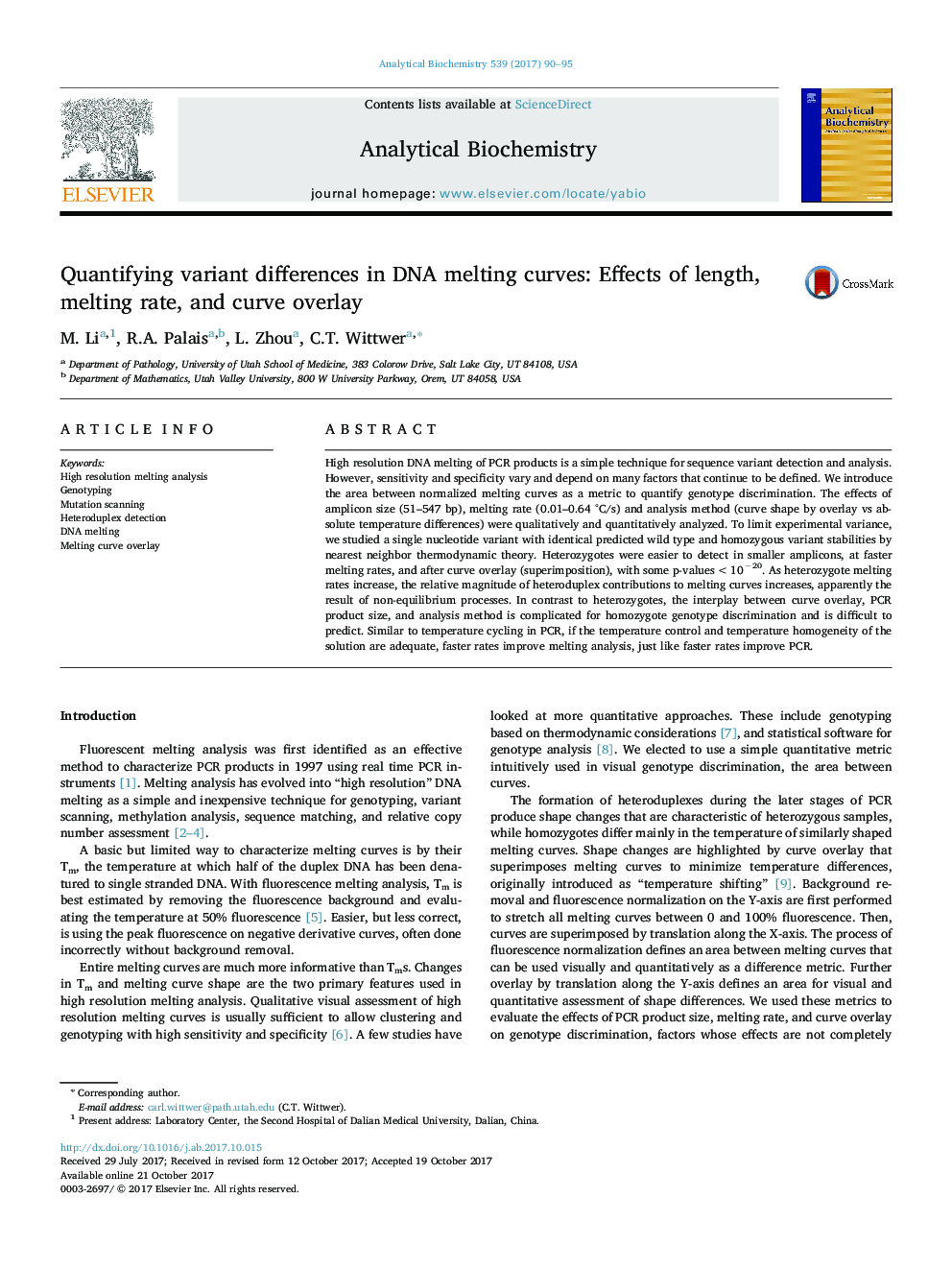| کد مقاله | کد نشریه | سال انتشار | مقاله انگلیسی | نسخه تمام متن |
|---|---|---|---|---|
| 7557171 | 1491308 | 2017 | 6 صفحه PDF | دانلود رایگان |
عنوان انگلیسی مقاله ISI
Quantifying variant differences in DNA melting curves: Effects of length, melting rate, and curve overlay
ترجمه فارسی عنوان
تفاوت های مختلفی در منحنی های ذوب ذوب: اثرات طول، نرخ ذوب و پوشش منحنی
دانلود مقاله + سفارش ترجمه
دانلود مقاله ISI انگلیسی
رایگان برای ایرانیان
کلمات کلیدی
موضوعات مرتبط
مهندسی و علوم پایه
شیمی
شیمی آنالیزی یا شیمی تجزیه
چکیده انگلیسی
High resolution DNA melting of PCR products is a simple technique for sequence variant detection and analysis. However, sensitivity and specificity vary and depend on many factors that continue to be defined. We introduce the area between normalized melting curves as a metric to quantify genotype discrimination. The effects of amplicon size (51-547 bp), melting rate (0.01-0.64 °C/s) and analysis method (curve shape by overlay vs absolute temperature differences) were qualitatively and quantitatively analyzed. To limit experimental variance, we studied a single nucleotide variant with identical predicted wild type and homozygous variant stabilities by nearest neighbor thermodynamic theory. Heterozygotes were easier to detect in smaller amplicons, at faster melting rates, and after curve overlay (superimposition), with some p-values <10â20. As heterozygote melting rates increase, the relative magnitude of heteroduplex contributions to melting curves increases, apparently the result of non-equilibrium processes. In contrast to heterozygotes, the interplay between curve overlay, PCR product size, and analysis method is complicated for homozygote genotype discrimination and is difficult to predict. Similar to temperature cycling in PCR, if the temperature control and temperature homogeneity of the solution are adequate, faster rates improve melting analysis, just like faster rates improve PCR.
ناشر
Database: Elsevier - ScienceDirect (ساینس دایرکت)
Journal: Analytical Biochemistry - Volume 539, 15 December 2017, Pages 90-95
Journal: Analytical Biochemistry - Volume 539, 15 December 2017, Pages 90-95
نویسندگان
M. Li, R.A. Palais, L. Zhou, C.T. Wittwer,
